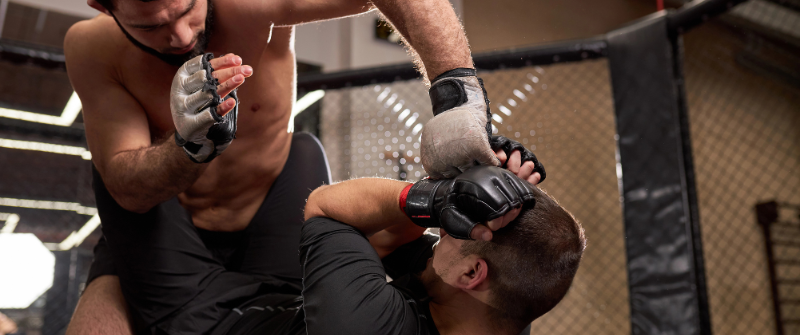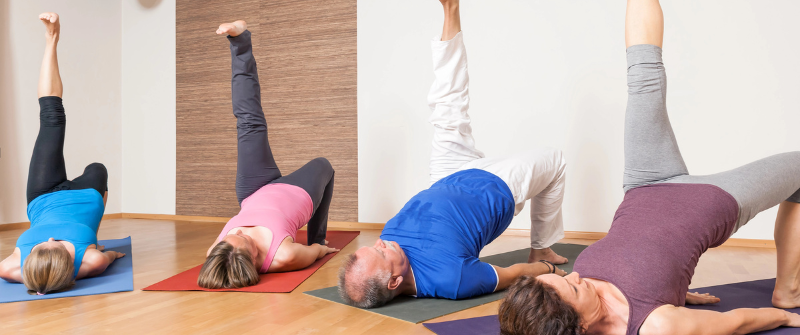
- by NEXO Team
- September 22, 2025
Outdoor and mobile yoga classes are popping up everywhere: parks, beaches, corporate offices, even private backyards. These settings bring fresh energy and new audiences, but they also introduce risks that studio walls typically keep out. Uneven ground, changing weather, or injuries in unfamiliar spaces quickly turn a peaceful class into a stressful situation.
For instructors stepping into these environments, carrying the right insurance helps keep their classes running smoothly while offering protection in the event of unexpected incidents outside their traditional studio setting.
Risks Unique to Outdoor and Mobile Yoga
Teaching yoga outside of the studio opens up new opportunities, but it comes with a different set of risks instructors need to consider. Before scheduling classes in a new setting, it helps to understand the most common challenges:
- Environmental hazards: Uneven ground can cause rolled ankles or falls, especially when students are moving through balance poses. Weather adds another layer of uncertainty. Sudden wind, rain, or extreme heat could make a class uncomfortable or even unsafe. Outdoor settings also bring insects, noise, and other distractions that may disrupt focus or create hazards.
- Location liability: When injuries occur in public spaces or private homes, questions about responsibility arise quickly. Without the right protection, instructors could face personal liability for accidents that occur on someone else’s property.
- Equipment risks: Teaching outside the studio involves hauling mats, props, and sound systems from one location to another, and frequent transport can lead to wear, loss, or unexpected damage.
- Third-party exposure: Shared spaces mean bystanders sometimes wander close. If someone outside the class is accidentally injured, instructors could be held accountable.
Also Read: Online Yoga Classes: Should Your Studio Go Digital?
Why Studio Insurance Doesn’t Always Apply
Most yoga studios carry insurance, but coverage typically applies only to classes held within the facility. Once an instructor starts teaching in a park, on a beach, or at a private residence, the protection that seemed dependable often falls away. Some studios offer add-ons that extend coverage to off-site classes, but these options aren’t always included by default. It’s easy to assume an existing policy will travel with you, only to learn later that it doesn’t.
Counting on a venue’s insurance rarely fills the gap. A park permit or corporate office may carry its own liability policy, but that coverage is designed to protect the property owner, not the instructor leading the class. If someone is injured or equipment is damaged, the instructor could still be left exposed. Without insurance tailored to off-site teaching, the risks fall squarely on the person running the class.
Types of Coverage to Consider
Outdoor and mobile classes call for coverage that matches the setting. Studio policies often stop at the door, so instructors who teach in parks, private homes, or at special events need insurance that’s built for the realities of working off-site. Several options can help fill those gaps.
- General Liability Insurance: Covers accidents like slips, falls, or third-party injuries. If a student twists an ankle on uneven ground or trips over a mat, this policy can help with the claim.
- Professional Liability Insurance: Protects against accusations tied to teaching, such as claims of improper instruction or guidance that allegedly caused harm during class.
- Equipment Coverage: Mats, blocks, straps, and sound systems often need to travel between locations for classes. This policy helps cover the cost of repair or replacement if gear is stolen, damaged, or lost in transit.
- Event Coverage: Temporary policies are useful for festivals, retreats, or workshops, since they offer short-term protection when teaching larger or unfamiliar groups.
Also Read: General Liability Versus Professional Liability Insurance: What Is the Difference?
Legal and Contractual Requirements
Teaching yoga outside a studio often comes with rules instructors need to follow. Many cities require proof of insurance before granting permits for classes in public spaces. Parks and recreation departments want to know that any injuries or property damage will be handled appropriately, so documentation is usually part of the application process. Without it, an instructor may not even be allowed to book the space.
Corporate wellness programs often have similar requirements. Companies typically ask for a certificate of insurance before hosting on-site classes to protect both employees and the organization. Offering sessions in private residences sometimes comes with extra steps. For instance, homeowners may want liability waivers signed before allowing classes on their property, and instructors usually need their own coverage in case a participant gets hurt. Having the right insurance makes it possible to meet these requirements and keep opportunities open without unnecessary delays or complications.
Business Advantages of Being Insured
Carrying the right insurance gives instructors protection against accidents while also showing a strong commitment to professionalism. Clients, venues, and corporate partners often view documented coverage as a sign that safety and preparation come first. A certificate of insurance may help secure public spaces or corporate wellness opportunities, as many organizations require proof of coverage before allowing classes on their property. Students appreciate the same level of preparation, which builds more confidence in the instructor leading each session.
There’s also the personal side. Coverage helps protect assets if a lawsuit arises, which takes a huge weight off an instructor’s shoulders. Teaching in outdoor spaces or private homes feels far less stressful when the financial risks are covered. With the right protections in place, instructors are able to confidently explore retreats, pop-up events, or larger workshops, turning expansion into a realistic next step instead of a constant worry.
Also Read: Yoga Business Expansion? Update Your Insurance Before You Scale
Best Practices for Outdoor/Mobile Yoga Safety
Outdoor and mobile classes bring a refreshing change of pace, but they also call for a few extra precautions. Visiting the location ahead of time helps uncover any potential hazards like uneven ground, low branches, or nearby traffic before students ever arrive. Taking simple steps with portable safety gear adds another layer of preparation. Non-slip mats, a first-aid kit, and shade on hot days all help create a space where students are able to focus without distraction.
Clear waivers are another important piece, as they give participants an understanding of possible risks while protecting the instructor if something unexpected happens. And even though the setting might feel casual, keeping professional standards still matters. Arriving early, organizing equipment, and setting clear expectations at the start of class help everything run smoothly so students can fully enjoy the experience and leave feeling good about the instruction they received.
Conclusion
Teaching yoga outside the studio expands your reach, but it also has risks that shouldn’t be ignored. The right insurance keeps instructors protected while still offering the freedom and flexibility of outdoor or mobile classes. Before your next session, consider speaking with a fitness-specific provider who understands these needs. NEXO offers tailored coverage, competitive rates, and hands-on support, so you can plan with confidence while we handle the insurance details. Apply today to get started with NEXO!
Categories
Fill out a short form to contact us with your questions or to receive a customized quote.
Recent Posts
-
 NEXO’s Affinity Program: How Fitness Suppliers and Associations Can Partner for Profit and Protection
December 5, 2025
NEXO’s Affinity Program: How Fitness Suppliers and Associations Can Partner for Profit and Protection
December 5, 2025 -
%20(1).png) How to Insure an MMA Gym Without Paying for Coverage You Don’t Need
December 5, 2025
How to Insure an MMA Gym Without Paying for Coverage You Don’t Need
December 5, 2025 -
 Mastering Liability for Jiu-Jitsu Tournaments and Martial Arts Events
December 5, 2025
Mastering Liability for Jiu-Jitsu Tournaments and Martial Arts Events
December 5, 2025 -
 From Zen to Zoning: What Every Yoga and Pilates Studio Owner Should Know Before Signing a Lease
December 5, 2025
From Zen to Zoning: What Every Yoga and Pilates Studio Owner Should Know Before Signing a Lease
December 5, 2025 -
%20(1).png) Why Your Referral & Loyalty Program Can Impact Your Insurance Rates
December 5, 2025
Why Your Referral & Loyalty Program Can Impact Your Insurance Rates
December 5, 2025
